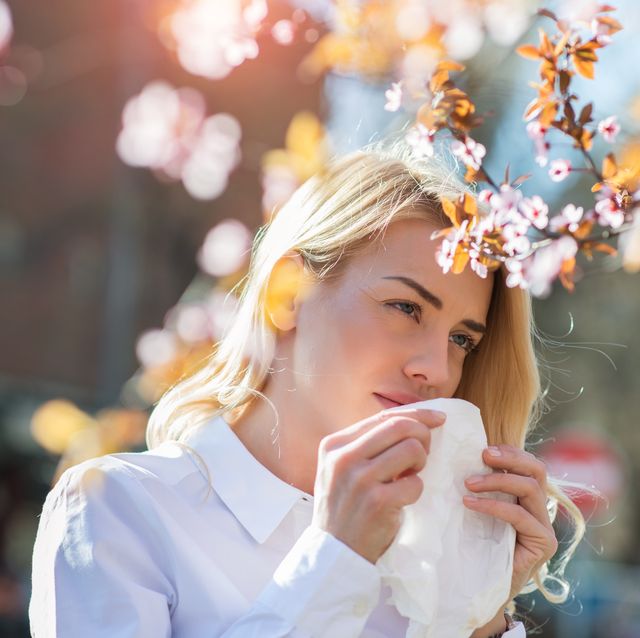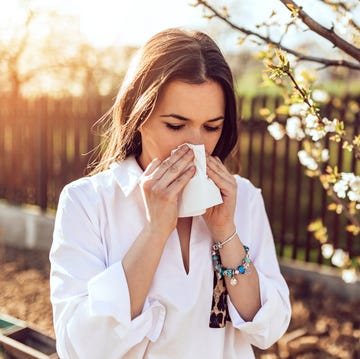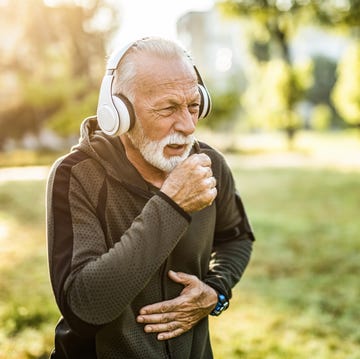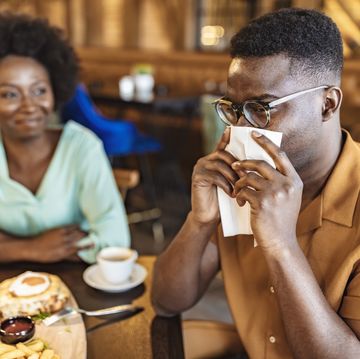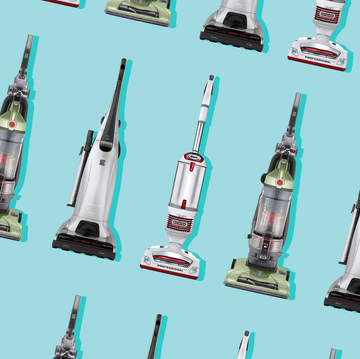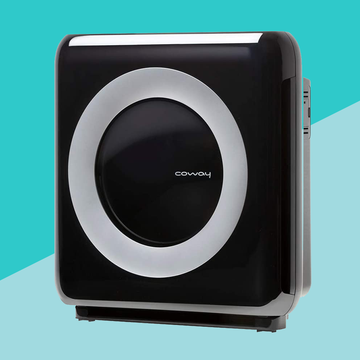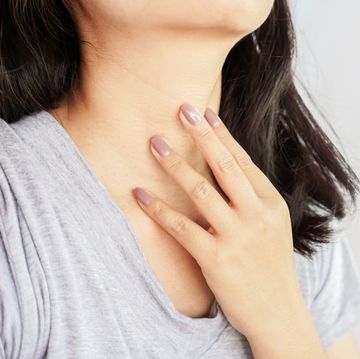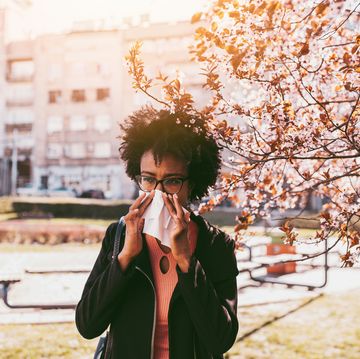Allergy season is here and the timing couldn’t be worse. People with allergic rhinitis (a.k.a. hay fever) are developing symptoms that could potentially be mistaken for COVID-19, the respiratory illness caused by the novel coronavirus.
There’s one key thing to keep in mind, though. “Allergies are predictable,” says S. Michael Phillips, M.D., a professor of medicine in allergy and immunology at Penn Medicine. “They come on at a certain time because of pollen.”
This allergy season could be particularly bad, depending on where you live, because many parts of the country had a mild winter. “Since it has been unseasonably warm, there has been an increase in pollen,” says Purvi Parikh, M.D., an allergist with Allergy & Asthma Network. That winter warmth can cause trees and flowers to bloom early, leading to a longer, more drawn out allergy season, she explains.
But allergy season is taking hold while confirmed cases of COVID-19 surge in the U.S., making it an especially tricky time to have hay fever—yes, even if you’ve never dealt with allergies in the past.
“Allergies can take years to develop,” Dr. Parikh says. And, in more severe seasons, people who don’t usually have allergies may develop some kind of reaction simply because there’s so much pollen out there, Dr. Phillips says. With that in mind, here are the top symptoms of hay fever to watch for this spring, and what to do if this is a new thing for you.
What causes hay fever, exactly?
Allergies—seasonal or not—begin with your immune system, according to the American Academy of Allergy, Asthma & Immunology (AAAAI). If you have allergies, your immune system mistakes an otherwise harmless substance like pollen as an invader, so it overreacts by producing Immunoglobulin E (IgE) antibodies. Those antibodies then travel to cells that release histamine and other chemicals, spurring an allergic reaction. During the spring, the most common triggers of allergic rhinitis are grass and tree pollen. In the fall, airborne mold spores and ragweed are top offenders.
What are the symptoms of hay fever?
Hay fever specifically affects the nose, but the name is a bit misleading: It doesn’t cause a fever and you don’t need to be exposed to hay to feel the effects. If you have seasonal allergies, you might experience the following symptoms, according to the American College of Allergy, Asthma, and Immunology (ACAAI).
- Sneezing
- Nasal congestion
- Runny nose
- Watery eyes
- Itchy throat and eyes
- Wheezing
- Coughing
- Fatigue (often due to poor sleep as a result of nasal obstruction)
Because these symptoms feel like the common cold, it can be tough to figure out what your body is dealing with. Still not sure if it’s hay fever? Ask yourself these questions:
✔️How did your symptoms start? Colds tend to come on slowly (typically over a few days) while allergies start up as soon as you’ve been exposed to an allergen.
✔️Are you itchy? An itchy nose, throat, or eyes is a classic sign of allergies, but it’s pretty uncommon for colds. “Sometimes, if pollen comes into contact with the skin, it can cause itching and actual hives,” Dr. Phillips says.
✔️Do you have a fever or body aches? Colds and other illnesses caused by viruses can cause both, but allergies don’t. That’s the biggest difference between seasonal allergies and COVID-19, too. Seasonal allergies don’t usually cause a fever, which is common for coronavirus patients, Dr. Phillips says.
✔️How long have your symptoms gone on for? Colds tend to clear up in a week or two. But if your symptoms go on for weeks or months, you’re probably dealing with allergies.
What’s the best hay fever treatment?
Doctors would typically recommend calling your local allergist to try to figure out what, exactly, you’re allergic to and the right treatment for you. But right now, things are a little different as the U.S. faces an overwhelmed healthcare system.
Instead, “you can take conservative measures on your own, and there are a variety of options,” says Omid Mehdizadeh, M.D., an otolaryngologist and laryngologist at Providence Saint John’s Health Center in Santa Monica, Calif.
Start with a salt water spray or nasal irrigation to try to clean out your nasal passages. “If that doesn’t work, you can use an air purifier as well,” he says. These devices help eliminate contaminants in the air, like pollen, pet dander, and mold spores.
Making lifestyle changes, like keeping your windows closed and showering as soon as you come inside after being outdoors can also help, Dr. Phillips says.
OTC medication is also really effective if these steps don’t seem to do enough. Steroid sprays are a “good way to start,” Dr. Parikh says, citing Flonase, Nasacort, and long-acting antihistamines like Allegra, Zyrtec, and Claritin, as good options. If you can find generic versions of these, Dr. Phillips recommends trying that route to save money. “Generic drugs are 99.9% identical to a brand name,” he says.
If you’ve tried those steps and you still don’t have relief, Dr. Parikh recommends consulting an allergist. “Many are doing tele-visits,” she says, noting that allergists can confirm if you’re experiencing allergies during these virtual appointments and prescribe medication if needed. Eventually, though, they’ll want to test you to see what your triggers are.
Like what you just read? You’ll love our magazine! Go here to subscribe. Don’t miss a thing by downloading Apple News here and following Prevention. Oh, and we’re on Instagram too.
